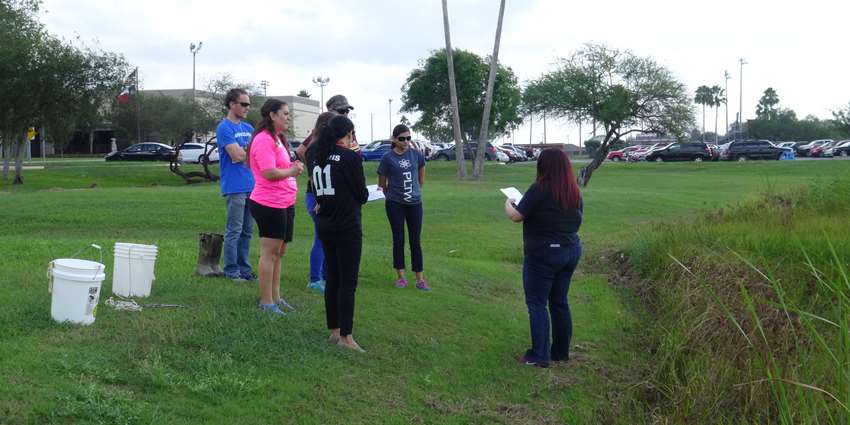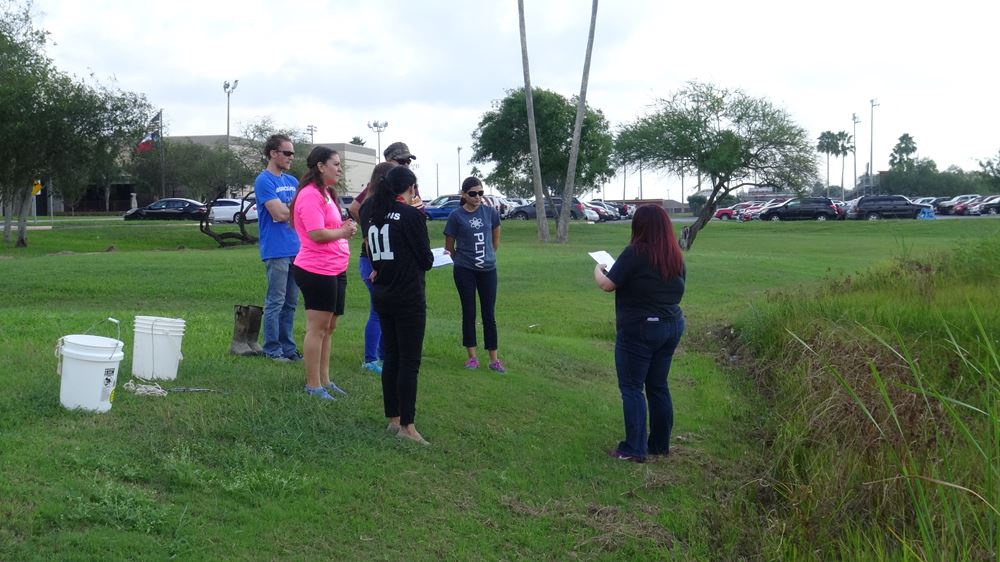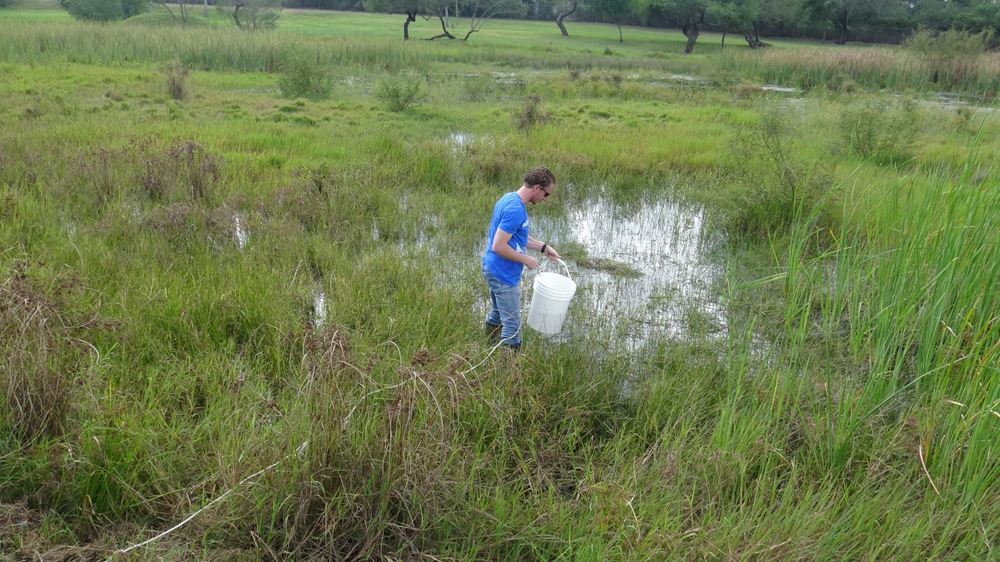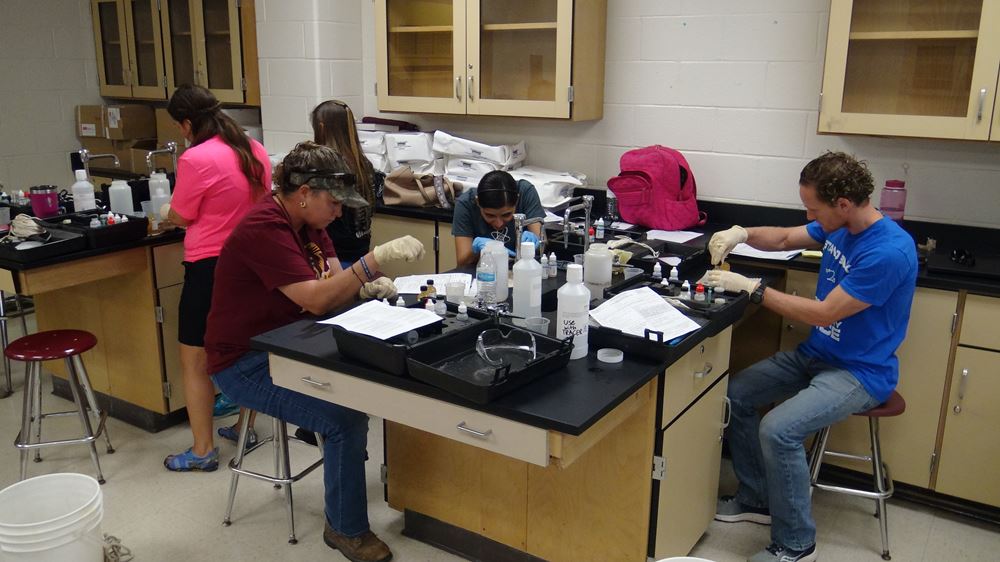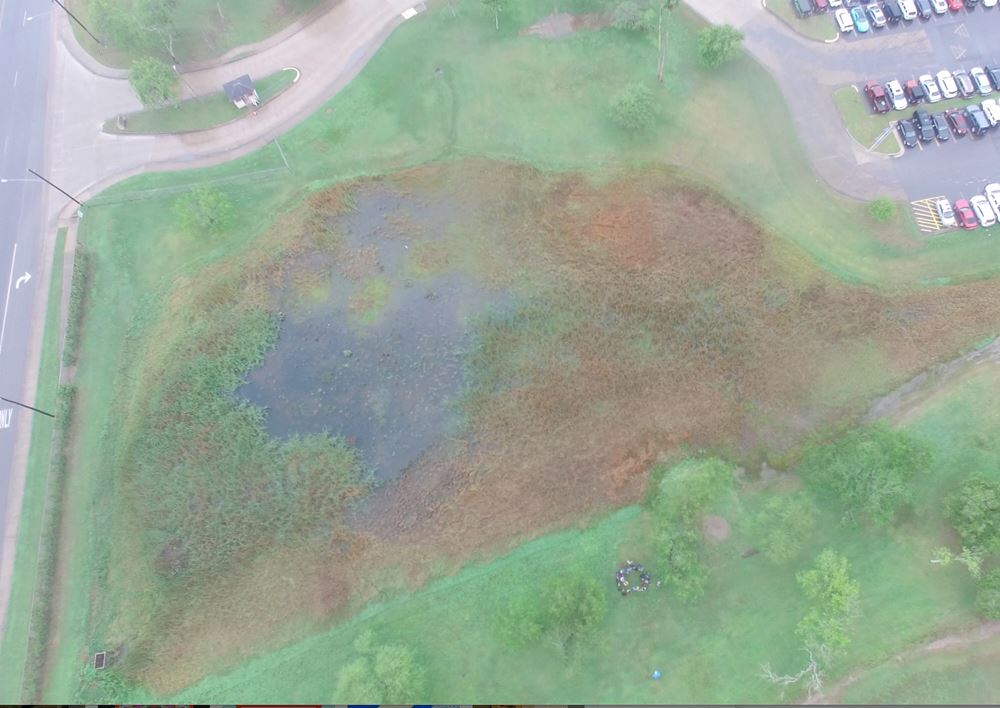The Arroyo Colorado Partnership, Texas Water Resources Institute (TWRI), Texas Stream Team (TST) and Los Fresnos Consolidated Independent School District (LFCISD) are partnering to implement and monitor stormwater best management practices (BMPs) on a wetland adjacent to the Los Fresnos High School campus in the Lower Rio Grande Valley as part of the Falcon Pond Beautification Project.
The project is funded with grants from the U.S. Environmental Protection Agency through the Texas Commission on Environmental Quality.
When it rains, stormwater from the high school flows across and under the school’s parking lot and eventually drains into a wetland, Falcon Pond. Falcon Pond is the bed of an abandoned resaca, or ancient distributary channel of the Rio Grande, that was modified to serve as a stormwater retention pond.
Having the students design, implement and monitor certain BMPs is part of the school district’s Project Based Learning (PBL) Program developed by Alejandro Guzman, LFCISD science strategist for grades 6-12; Jimmy McDonough, LFCISD executive director for academics; and Jaime Flores, TWRI project manager.
Guzman said teachers have been planning this project since January 2018 to help supplement their curriculum and provide students with real-world science applications.
Guzman said the beautification project is intended to help decrease the amount of pollutants entering the pond from the high school campus and parking lot. The project’s water quality goal is to use native plants to slow down the water entering the Falcon Pond and increase retention time to remove sediment and other contaminants from the stormwater.
Part of the PBL program includes students taking water quality samples from stormwater that directly feeds into Falcon Pond.
The project kicked off in January 2018 when the stream team held the first of two Citizen Water Quality Monitoring trainings at the high school. At the first training, high school teachers and biology and environmental science students were taught to use the basic stream team kits. Another training in November 2018 also included three middle school teachers as well as three high school teachers.
In March 2019, seventh and eighth grade middle school students enrolled in the Project Lead the Way Energy and Environment class took a field trip to Los Fresnos High School to learn about different types of water pollution. They received hands-on learning, field experience and first-hand information directly from community experts.
Students worked with topographic maps of the area and identified the flora species hosted near the pond. They took water samples across six different areas and tested the water for pH, temperature, dissolved oxygen and nitrate concentrations.
After the field trip, the middle school students had three weeks to research the key elements from the four stations on the field trip and create a portfolio, brochure or presentation on the different components of the Falcon Pond Beautification project.
The students’ final project will include a graphical representation of the water quality results, a design for interpretive signage to be installed of the native plant species, a 3D or virtual map of the pond area where stormwater BMPs are to be installed, and information on potential careers related to the project.
Based on these materials, the students will provide recommendations for the design of the stormwater BMPs and for the selection and placement of native trees.
After the project is over, the project team will determine if the PBL was successful and discuss any needed changes to improve the PBL program. Students will continue to collect water samples during storm events and plot the results to establish a baseline of what is in the water and try to spot any trends over time.
For a more detailed story, turn to page 30 of this Ag Mag issue.

